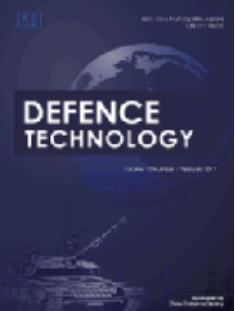通过去除杂质镁提纯无定形硼粉及其理化性质
IF 5.9
Q1 ENGINEERING, MULTIDISCIPLINARY
引用次数: 0
摘要
目前最常用的非晶态硼粉制备方法是镁热还原法,但这种方法得到的非晶态硼粉大多含有镁、氧等难以去除的杂质,这些杂质会严重影响非晶态硼粉的应用,需要严格去除。在本研究中,通过烧结和淬火对酸不溶性杂质进行改性,通过超声波酸浸对镁杂质进行优化。我们观察到淬火温度对镁杂质的去除效率起着至关重要的作用。结果表明:将非晶硼粉在800℃下淬火并采用超声辅助酸浸,可使非晶硼粉中的镁含量从5.67%降至2.40%;此外,硼的氧化反应受粉末粒度和比表面积的影响,有效活化能与这两个因素密切相关。淬火和酸浸后,我们观察到硼粉样品的比表面积增加,导致活性增强。总之,我们的研究提出了一种有效的策略来减少镁杂质和提高非晶硼粉的性能,为促进其在不同行业的应用提供了有希望的途径。本文章由计算机程序翻译,如有差异,请以英文原文为准。
Purification of amorphous boron powder through the removal of impurity magnesium and its physicochemical properties
At present, the most common preparation method of amorphous boron powder is magnesium thermal reduction method, but the amorphous boron powder obtained by this method mostly contains impurities such as magnesium and oxygen which are difficult to remove, and these impurities will seriously affect the application of amorphous boron powder and need to be strictly removed. In this research, the acid-insoluble impurities were modified through sintering and quenching, while the magnesium impurities were optimized via ultrasonic acid leaching. We observed that the quenching temperature played a crucial role in determining the efficiency of magnesium impurity removal. The results show that the magnesium content in amorphous boron powder can be reduced from 5.67% to 2.40% by quenching the amorphous boron powder at 800 °C and using ultrasonic assisted acid leaching. Furthermore, the oxidation reaction of boron is influenced by the powder's particle size and specific surface area, with the effective activation energy being intimately tied to both these factors. Post-quenching and acid leaching, we observed an increase in the specific surface area of the boron powder samples, leading to enhanced activity. In conclusion, our study presents an effective strategy to mitigate magnesium impurities and elevate the performance of amorphous boron powder, offering promising avenues for advancing its utilization across diverse industries.
求助全文
通过发布文献求助,成功后即可免费获取论文全文。
去求助
来源期刊

Defence Technology(防务技术)
Mechanical Engineering, Control and Systems Engineering, Industrial and Manufacturing Engineering
CiteScore
8.70
自引率
0.00%
发文量
728
审稿时长
25 days
期刊介绍:
Defence Technology, a peer reviewed journal, is published monthly and aims to become the best international academic exchange platform for the research related to defence technology. It publishes original research papers having direct bearing on defence, with a balanced coverage on analytical, experimental, numerical simulation and applied investigations. It covers various disciplines of science, technology and engineering.
 求助内容:
求助内容: 应助结果提醒方式:
应助结果提醒方式:


